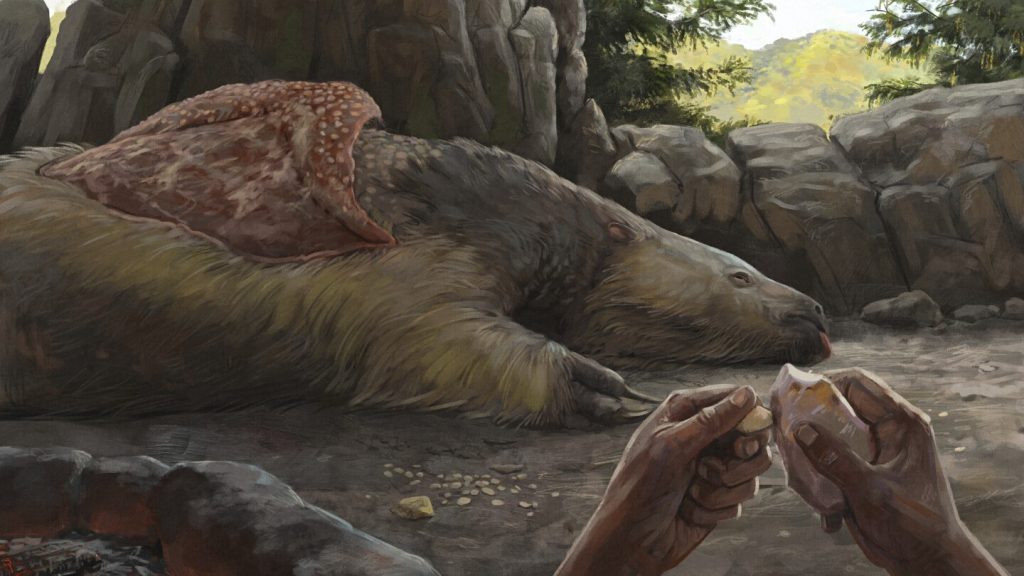The long-held belief that the first humans to arrive in the Americas swiftly eradicated giant ground sloths and other megafauna, a concept known as “Pleistocene overkill,” is being challenged by emerging archaeological evidence. This new research suggests a much earlier human presence in the Americas, potentially coexisting with these enormous creatures for millennia. Sites like Santa Elina in Brazil offer compelling clues, with giant ground sloth bones bearing marks of human manipulation, possibly for crafting jewelry or adornments. These artifacts date back approximately 27,000 years, significantly predating the previously accepted timeline for human arrival in the Americas.
The traditional narrative, centered around the Clovis site in New Mexico and its 11,000 to 13,000-year-old artifacts, linked human arrival with the end of the last Ice Age and the subsequent extinction of megafauna. This theory posited that an ice-free corridor opened up in North America, allowing humans to cross the Bering land bridge from Asia and quickly dominate the landscape, leading to the demise of large mammals. However, this convenient alignment of timelines is now being questioned in light of new discoveries and more sophisticated research methods.
The Santa Elina findings, coupled with other recent archaeological discoveries, are forcing a re-evaluation of the human origins story in the Americas. Researcher Mírian Pacheco’s analysis of sloth osteoderms reveals that these bones were likely carved shortly after the animals’ deaths, contradicting the idea that ancient people were working with already fossilized remains. This, along with evidence of possible human-made fires at the site, suggests a much earlier and more sustained interaction between humans and megafauna.
The debate about the exact timing of human arrival in the Americas remains complex and contentious. While the Clovis-first theory dominated for much of the 20th century, sites like Monte Verde in Chile, dating back 14,500 years, have challenged this paradigm. Even older sites, such as Arroyo del Vizcaíno in Uruguay (around 30,000 years old) and White Sands National Park in New Mexico (21,000 to 23,000 years old), further complicate the established timeline. These sites present evidence of human activity, including cut marks on animal bones and human footprints alongside those of giant mammals.
Despite the ongoing debate, the accumulating evidence suggests a more nuanced picture of human arrival and its impact on the environment. If humans were present in the Americas significantly earlier than previously believed, they did not immediately cause the mass extinction of megafauna. The White Sands footprints, for example, capture a moment of interaction between a human and a giant ground sloth, suggesting a level of coexistence. The sloth, upon encountering the human footprints, rears up and changes direction, implying awareness and a possible reaction to human presence, but not necessarily immediate predation.
The ongoing research at various archaeological sites promises to reveal further details about the early human presence in the Americas and their relationship with the megafauna. While some researchers remain skeptical of the evidence from sites like White Sands, the consistent emergence of older sites and more refined dating techniques continues to challenge the traditional narrative. This evolving understanding not only reshapes our understanding of human history but also raises crucial questions about the complex interplay between humans and their environment in the ancient past. The possibility of prolonged coexistence between humans and megafauna suggests a more complex relationship than simple predation and highlights the need for continued research to fully unravel this intricate chapter of human history.

